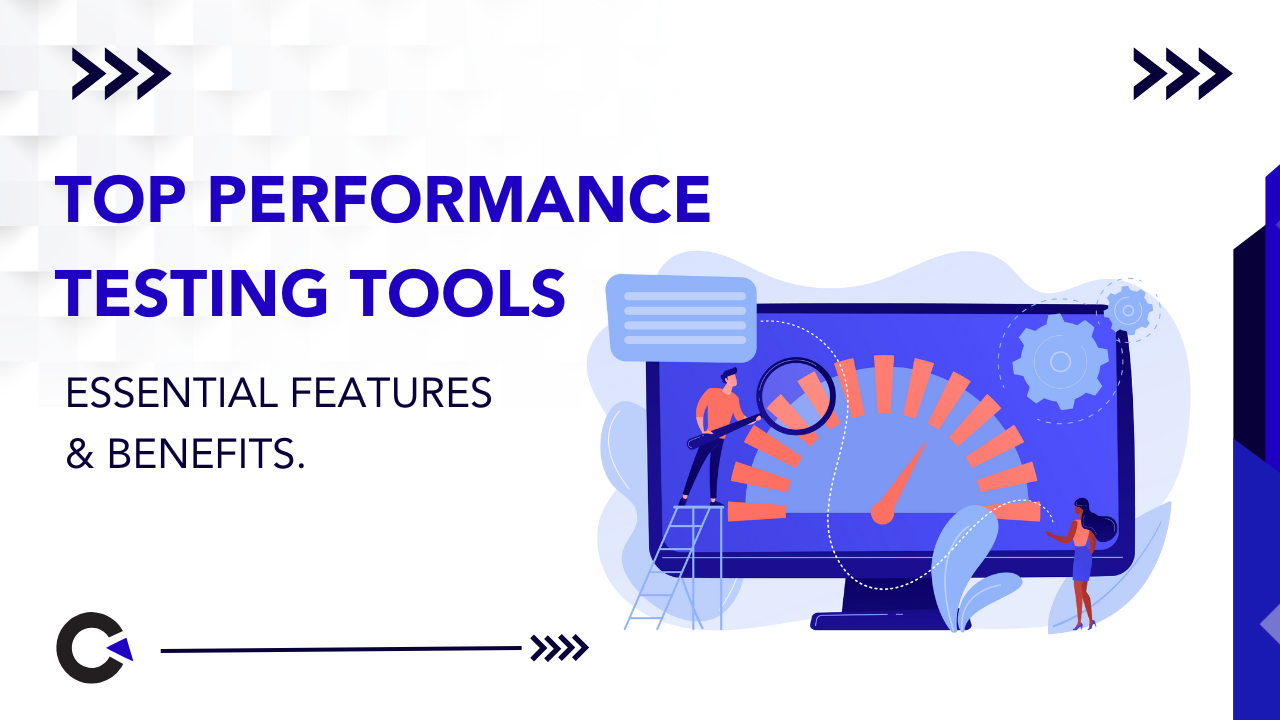
by admin | Jan 2, 2020 | Software Testing, Fixed, Blog |
Localization testing falls within the realm of software testing services. This software testing technique ensures that the software product ‘behaves’ as per the local settings and culture. As a leading software testing company we understand the importance of customizing software / applications to suit the targeted country, language, and the cultural intricacies. Localization testing is focused mainly on content and user interface, ensuring that the application can be used easily by the target audience in a particular country.
To match and engage a particular demographic and locale, it is important that the software is appropriate from the linguistic and cultural aspects – this is why Localization testing is required. This form of testing is necessary to make changes in the user interface, as also the initial settings as per the requirements. Localization testing requires expert testers to repeat the same functions in order to verify the cultural appropriateness of UI, linguistic and typographical errors and more. The features of this form of testing include:
- A localized user interface (UI) – to ensure usability and comfort of the persons of a particular country and with specific cultural aspects
- Localized content and information – the content in the application would be prepared to be suitable to the local culture and language, and localization testing ensures that all these aspects actually match the comfort level of the locals
- Particular and Identifiable Language – This form of testing checks the compatibility of the language of the software with the language of a specified region
Compatibility of Hardware – The test ascertains that both the hardware and the software are compatible with the specified region
- The method for localization testing includes setting up build verification testing, functional testing, regression testing, and the completion sign-off.
Prior to detailed QA, build verification testing is undertaken – this is a subset of functional testing
- In order to run normal test cases and uncover log defects during execution, normal/functional testing must be conducted
- Regression testing is next to ensure that defects are resolved and that the defects did not affect other components of the application
Before delivering to the customer, there must be one final check on the build – the final and completion sign-off is a necessary step
The process of localization is a critical one, and we as the experts understand that localization testing must ensure that all the effort you put in will take your product to the widest possible range of audience, and within budget. Given our experience, we at Codoid are both international and local experts and have the ability to ensure scalability of apps, platforms and programs. This in turn ensures that no additional code will be required when foraying into new markets. Localization testing is an essential component and tool in spreading business to an increasing number of consumers. By paying attention to the minute details a business would be better equipped to impact the expectations, needs, wants, and behaviors of a larger consumer base and at a much bigger scale. Being able to reach out and engage a larger audience goes beyond the written and spoken word – connect with us to gain all this and more.

by admin | Jan 1, 2020 | Mobile App Testing, Fixed, Blog |
Testing mobile apps on real devices is a must. However, managing and procuring the required number of devices as and when need arises is a cumbersome task. At those instances cloud testing becomes imperative which reduces cost and mobile device management effort. In some cases you cannot use cloud real devices for mobile app testing. Let’s see the benefits of cloud testing first and analyse when cloud testing option is not feasible.
As a mobile app tester, if you need to complete the regression testing on multiple Android and IOS versions, then you will have to search and prepare the required real devices to kick start your test activities. If any of your devices does not have enough battery power backup, then you need to put the device on charger before commencing the testing. Leave the mobile device management worries to Cloud Testing Platform provider and concentrate on how to test your mobile app effectively. Your team waits for your regression testing feedback. You cannot say that “The devices are getting ready for testing”. If you have cloud testing platform account like BrowserStack/SauceLabs, you can access any devices instantly.
While performing mobile app testing manually using in-house real devices, you cannot track what action has triggered a particular failure. On the other hand if you do testing on cloud device, all your actions will be stored on the cloud test log and you can perform the scenario again to reproduce the failure.
As a mobile app testing service company, we recommend testing your mobile apps in real world network conditions. Nowadays, every company has a good wired internet connectivity and in-house Wifi setup. Certifying and testing mobile apps using development center Wifi is a bad idea. Our recommendation is test using different network conditions like 2G,3G & 4G and see how your application is behaving. Now, the problem is changing the bandwidth and network settings for each mobile devices is a tedious task. If it is in cloud, you can launch the desired device in one click with the pre-configured settings.
Once you have automated your mobile app test cases, it should be executed as often as possible to reap benefits from automation testing. Again searching for devices and putting them on charger before test automation execution is a cumbersome task. Get any real device instantly from cloud and start the execution. That’s it. In the cloud platform, all the automation executions are recorded. You can playback them anytime for troubleshooting the failures. As a test automation services company, we use BrowserStack and Kobiton to execute automation test scripts in cloud.
As an outsourcing QA company, most of the times, we have been asked to test mobile apps in different geolocation. It is impossible to travel each country or state to conclude the testing. In cloud, you can change GPS location for a real device in order to test location based test scenarios. If your team is developing a mobile app from India for US customers, then test the app using US Geo-locations before releasing to market. However, not all apps require Geolocation testing. Say for instant , If a mobile app accesses current location and shows results based on it, then Geoloation testing is the ideal choice.
Testing mobile apps in the cloud is a boon for software testing community. However, in some cases, you cannot test it in the cloud. For example: if you need to test the mobile app using two different SIM cards or you want to test ANDSF implementation for a service provider or testing blue-tooth connectivity with IoT device, then cloud testing is ruled out. Contact us for your mobile app testing needs.

by admin | Dec 30, 2019 | Automation Testing, Fixed, Blog |
Microservices are important to the companies who want to build and deploy systems that are scalable, flexible, adaptable, and easy to develop. Automation tests are therefore needed to take things to live regularly. Microservices are modular and independently deployable as small composable components and thus are separately testable. As testing scales up from small independent microservices through integration and end-to-end testing to larger services ecosystems, it influences the testing pyramid.
So what is a Microservice?
Microservices is a part of software architecture. It involves developing single applications that can work together as a suite of small services, each running its process while communicating with HTTP resource API mechanisms. They require minimal centralized management systems and various data storage technologies and are written in multiple programming languages.
Service-Oriented Architecture (SOA) vs. Microservices
An SOA model is a dependent Enterprise Service Bus (ESB), whereas ‘Microservices’ use faster mechanisms. SOA focuses on imperative programming, and microservices use a responses-actor based programming style. SOA models also have outsized relational database management systems, yet microservices databases like NoSQL or micro-SQL connect to conventional databases. We can conclude that the architecture methods thus differ in how each creates an integrated set of services.
Service layer and test automation API Tests
Deploy multiple versions of service API’s in parallel and make sure that the version number appears at the endpoint address. When we create a microservice, service layer testing is complemented with API tests.
Let’s discuss five approaches to automation tests for microservices.
Unit testing
It is internal to the service and is the largest in terms of volumes. It should be automated based on development language and framework. Written at unit level or collection of units as the goal is to check parts of the software to validate for functionality.
Contract testing
It treats each service individually and independently call them to verify their responses. It also reframes testing principles and maps it to service layers of a testing pyramid. Considered a cost-effective substitute for integration tests.
Integration testing
Perform verification of the services that have been individually tested and check the functioning of inter-service communications. It validates if the system works seamlessly and that the dependencies between the services are present as expected. Limit the volume of full integration tests and write layer integration tests to ensure proper integration.
End-to-End (E2E) systems testing
E2E testing verifies if the entire process flow works correctly and includes all service and database integrations. Frameworks help automate functional testing by checking that the system behaves as expected when you deploy your application in a real-world environment.
Interface testing
User Interface (UI) testing is the final level of automation testing and checks the system in a
real-time end-user scenario before the application goes live.
The benefits of microservices in a large scale systems development is still contested. That’s why we recommend you install microservices only if a regular SOA does not meet your needs. If you are considering microservices, look no further than Codoid . As a test automation services company, we ensure that all testing is performed by the right set of qualified personnel to give the best quality output to our customers. Our testing tools accelerate testing for better productivity and shorter time to market. As automation tests are an essential requirement to create successful microservice architectures, we work together with our clients to help them deploy their products by giving them the best return on their investment with us.

by admin | Dec 29, 2019 | Software Testing, Fixed, Blog |
Even though the concept of a self-organizing team has been propagated as part of the Agile drive, there is really no clear definition in the documentation of the best or even such a team. However, the underlying premise of such a team is that it would produce optimum results. As a leading Software Testing Services Company we understand the importance and benefit of such a company, and have made an attempt to put together an understanding of the critical self-organizing team.
From the name it seems simple to understand that such a team would work cohesively and towards meeting a predetermined mission and future vision. Such a team, while having a certain level of a decision making authority, would simultaneously have the onus of their working style and evolving a collaborative system of working. In the realm of software testing services, a self-organizing team would plan and strategize from the bottom up level, rather than the typical top down method. Such a team would have a system to determine and balance workload, ensure a proactive approach to work and problems, and ensure that all measures are geared towards achieving the objectives.
A self-organizing team operates differently to other teams – continuous improvement is the objective. As experts in the realm of QA, we understand the importance of teams that can function autonomously and yet produce the desired results. Our team is constantly organizing and evolving to manage their work, with the least amount of control and supervision. This in turn drives efficiency and optimum management of work since each member remains open to clear communication. A self-organizing team consistently enhances its skills, asks the right questions, and collaborates to get an increasing amount of work from existing and new clients. Additionally, members of such a team assign work amongst itself rather than waiting for the manager / supervisor to tell them what to do.
Each Agile team would have a different approach to organizing their work and would use the experience of all those in the team to move towards success, rather than depending on the knowledge of their manager. Such teams take complete ownership of their work and the possible problems and challenges. It seems a bit far-fetched that unrelated and disconnected individuals put together would be able to work cohesively and form a self-organizing team. However, that is the underlying premise of such a team – that the individuals comprising it would be carefully selected and would have a common goal. This selection process would be a critical responsibility of the management – proper deliberation, analysis of personalities and skills – to ensure proper group dynamics. We at Codoid use the following criteria to ensure that our teams are self-organizing in essence:
A team that consists of members from cross-disciplines and skills would be larger than wanted, but every skill required to take an idea to reality would be necessary. With time, however, some team members should and must develop a wider range of skills, allowing for other team members to move on to other teams / projects. This is a great way to utilize existing skills and grow the skills of each member.
A single team must never have members with the same level of technical expertise. It is important to balance the skill levels such that all the workload is properly divided. The skills of a highly experienced programmer for example, would be wasted on coding features with low impact, while a less skilled member would not be able to deal with the higher level complexities. Such a balanced mix would also be required when looking at those with domain knowledge.
While ensuring diversity would mean considering race, culture, gender, and skills, it also means putting together individuals who have varied yet innovative ways of thinking about and approaching problems and challenges. Team diversity would mean looking at individuals depending upon how much data they would require before arriving at effective and practical decisions.
Random members would take a lot of time before they start working collaboratively. When putting together an Agile team, it would make sense to put team members who would have worked together in previous projects. Additionally, matching communication styles and personalities would also help to quickly ensure cohesiveness and common purpose.
There is no doubt that putting together a self-organizing team in Agile is an extremely challenging task. It requires patience and time, and the expertise of a senior person to coach and facilitate all the factors mentioned to ensure a ‘well-oiled’ self-organizing team. The process of building and maintaining such a team therefore is ongoing – hence it would be better to align your business with an experienced vendor with a self-organizing team. Connect with us to gain all these advantages and more.

by admin | Dec 27, 2019 | Mobile App Testing, Fixed, Blog |
Mobile technology has transformed the way people use their mobiles, and the demand for apps has thus increased. That’s why mobile app testing services companies must build apps with all the features and functionalities needed by the end-user and have a mobile application testing plan in place before deployment. A comprehensive strategy will ensure it functions as designed on different devices, hardware, systems, and operators.
To plan your mobile testing and QA strategy for the best test coverage, user interface, and device compatibility, follow these stages for the mobile application testing process.
Stage 1: Planning When the development phase is almost complete, the QA team should communicate with the team about their roles and expectations. They should also create test case sheets and maintain documentation during the entire process to certify the builds for release. It involves a combined effort between on and off-site teams.
Stage 2: Test case and script design Prepare test case documentation for every feature/functionality and determine which combination of manual, automation, or cloud simulator testing you’ll need. Prepare separate suites for manual and automated test cases/scripts to identify reusable ones that can be modified as per the project requirements.
Stage 3: Manual, automated and cloud testing Execute manual, automation, or cloud-based test cases. Run them on necessary functionalities to check there are no breakages. This development process is called scrum. The development team run scripts and deliver finished products to the QA team, who then run test cases on the build. Regression testing is done, and JIRA is used to file and track defects.
Stage 4: Identify types of testing Test if your mobile app is easy to use and provides end-user satisfaction. Maintain a cross-platform matrix and check coverage achieved by your beta testers. User acceptance testing is conducted for a QA screening test build. Decide what testing is required, which target devices to use, and what technical requirements should be tested. Check your mobile app with functional, usability, compatibility, performance, interface, accessibility, and external factors testing. App performance is verified by checking the responsiveness, battery consumption, stability, and changing the connection from 4G/5G to WIFI, etc. Test for scalability issues of the build by checking the installation, updates, sign-up/login, provisioning, operational, services, device-specific functions, error messages, and low-level resource testing. Security and compliance testing are also vital to ensure data privacy and protection for your app so that user data is protected.
Stage 5: Control and summary Complete detailed testing from early stages up to regression tests to stabilize your app. Your QA team should generate a test summary report, which is a management report that provides vital information on the tests conducted, including quality assessments and statistics from incident reports. It records the various testings performed, and the time it took to complete and helps future test planning. Also, it indicates if the software system is fit and meets user acceptance criteria.
Before the final version is made public, execute the testing stages to deliver a successful app into the market. QA is necessary from concept creation, requirement analysis, testing specifications until a finished product is released. Are you ready to check yours? At Codoid, one of the best software testing companies, our dedicated team will provide 24 hours QA support and follow a Scrum development model as it ensures on-time delivery. Schedule a demo with us today!’

by admin | Dec 26, 2019 | QA Outsourcing, Fixed, Blog |
From a business point of view, software testing can be a daunting task if a proper team doesn’t support it. The right Quality Assurance (QA) team can ensure failproof software through consistent testing, and sometimes outsourcing this task to a specialist company can reduce the pressure an internal team can often feel with aggressive timelines. Initially, outsourcing was used to cut down costs, but nowadays, it has become a useful strategy to achieve business goals.
Thereby accelerating the entire Software Development Lifecycle (SDLC) process, increasing productivity, objectivity, and efficiency. When is outsourcing required?
Short term – When your project has needs that require more testers or is a one-off requirement.
Long term – If your business needs a higher level of expertise, sound advice, and immediate solutions.
What are the benefits that come with outsourcing:
Quality and productivity improvement: For an unbiased evaluation of the software, businesses must assign the development and testing work to different teams.
Conversation: A seamless communication between your client and their stakeholders and factors such as issue resolution, escalation, and reporting will improve your communication model.
Configuration and change management: Another essential aspect of QA and testing outsourcing providers is that they maintain a “comprehensive change and settings management system.”
Flexibility and Scalability: Proficient QA testers are updated with the right technology needed to deploy the proper testing because they possess the right skill set to tackle the requirement.
Requires time and attention: Experienced professionals can make the whole QA process quite streamlined, reducing the time needed to complete the process as well as costs.
Specialty specific: Even if data is confidential, testing a developed app from a professional’s point of view to check the quality for possible technical glitches.
Save money: Companies specializing in QA testing services can gain economies of scale and provide cost-effective solutions to its customers.
Concentrate on your core activities: Outsourcing can help you focus on core activities and prioritize tasks of your business.
Shortens the development cycle: Outsourced QA testing can happen alongside your current development phase and thus reduce the overall development cycle and launch of your product.
Experience and expertise: It is imperative to choose a well-established and accomplished partner who is aware of the latest trends, best practices, and strategies in the QA and software testing domain.
Security of code: Details of your code is safe with your outsourced QA company because they will be compliant with the latest regulations and international standards like ISO, GDPR, and IP Rights.
Early identification of risks: Detect bugs early in the process due to an agile QA process that starts with the SDLC process itself.
Understanding modern QA trends: QA companies evolve rapidly and are up to date with the latest trends to help identify the best tools and technology for testing their client’s applications.
Automation in QA: A competent QA team has an understanding of the tools used in the process for advanced automated techniques to test applications with the latest methodologies.
Testing should be handled as a separate function undertaken by a different team or outsourced to a qualified QA company. It will enable you to concentrate on core activities and innovation while we take care of software testing needs. With the burgeoning supply and demand of mobile, software, and web-based applications, the necessity of QA testing service providers has increased. While outsourcing, choosing the right QA partner can make all the difference between success or failure.
At Codoid, our experience and expertise, coupled with flexible engagement models, is available at a cost-effective option. QA is a critical part of the SDLC, and our highly-skilled QA engineers and software testing developers on staff are well-equipped with the latest methodologies. Companies face ineffective communication because of distributed agile teams in different time zones. We provide solutions like global delivery models such as real-time offshoring that offer round-the-clock monitoring and support to our clients. We are GDPR compliant, and we follow strict security measures like ISO 27001:2013, and you don’t have to worry about a breach of your IP when working with us. So, go ahead and drop us an email!



























